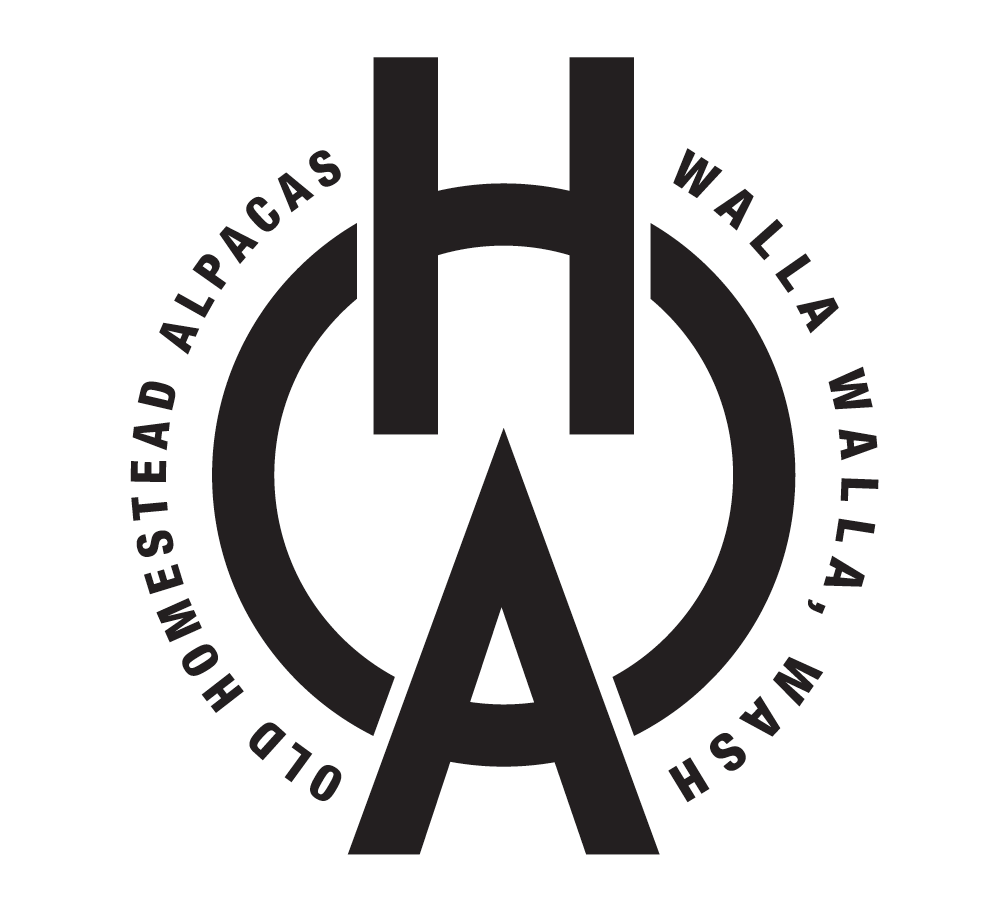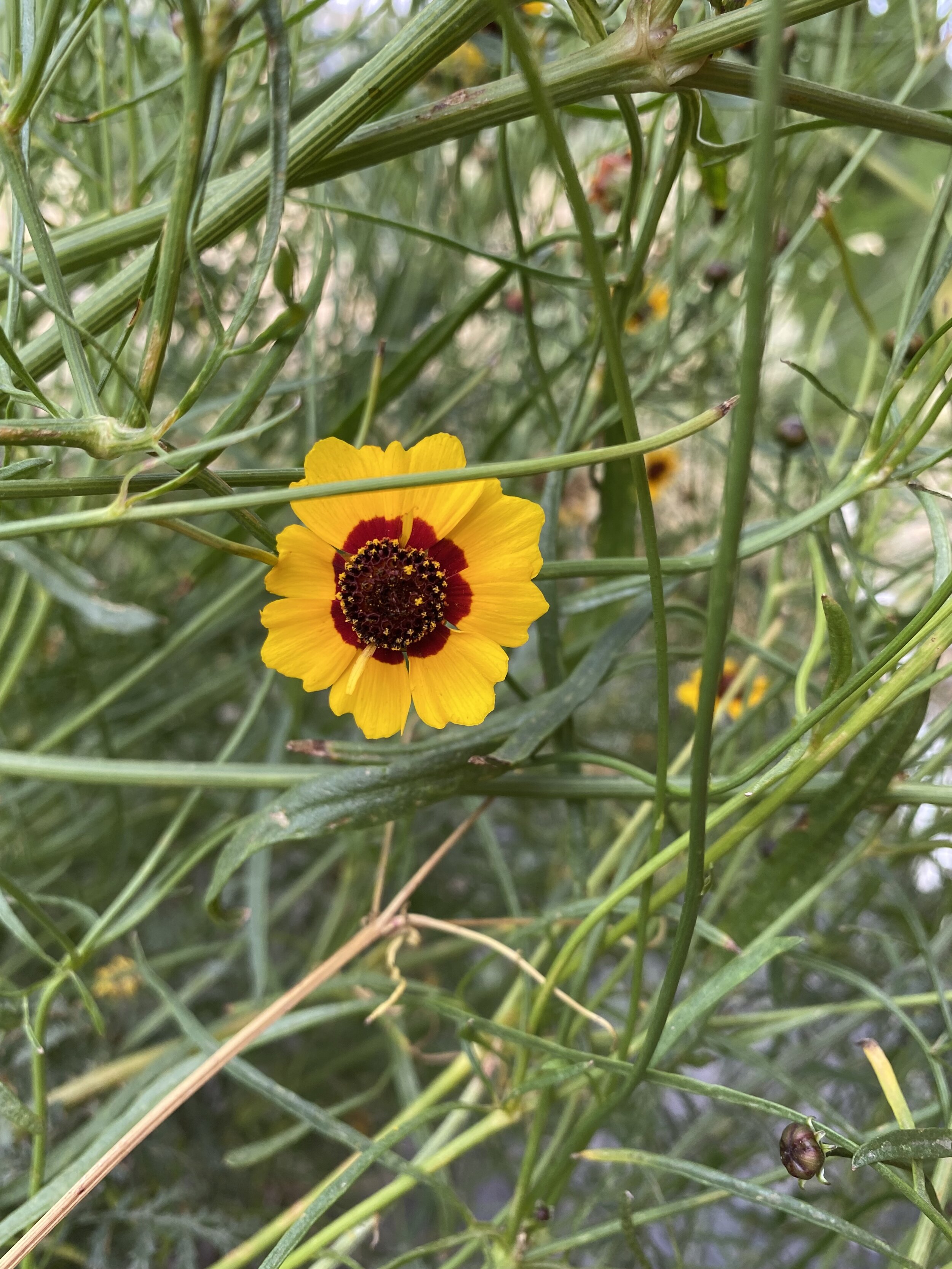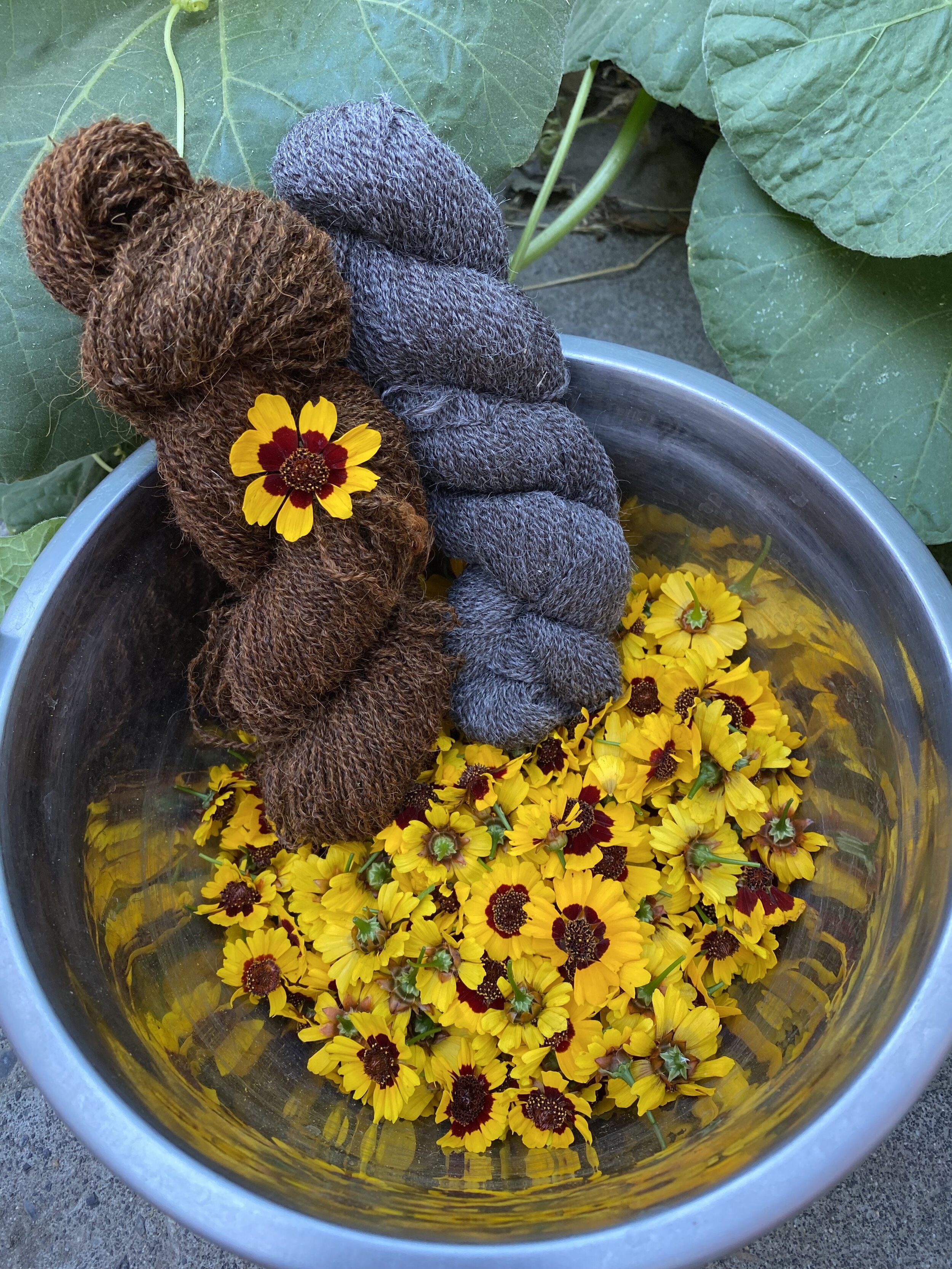Growing Clothes - the Color Edition
To me, color isn’t just about aesthetics—it’s a vibrant connection to the earth, the seasons, and possibility. That’s probably because I grow the color.
Growing natural dyes is a slow, steady process that starts in the soil, where the resulting colors are influenced by each step along the way.
From seed sowing in the cool days of spring.
To now, as I’m collecting blossoms in the early mornings before hot summer days set in.
Having the fiber and the color grown on the same farm, just seasons apart, means every stitch on each garment is interconnected.
And I’m excited to share the journey from plant to finished knitwear today with a peek in the dye garden.
For those who prefer a more narrative tour, here’s a bit more detail than the videos provide.
The dye garden
It’s a small, efficient space just four raised bed to grow all the color I’ll need, plus a little extra for sharing and safe keeping.
These buildings used to be a milking parlor (left) and it’s adjoining creamery when this farm was a dairy in the 1940s & 50s.
Now they’re my dye house and farmstore, respectively. This whole space backs up to the boys’ paddock.
I often stand in marvel, especially this time of year, when I can see the alpacas growing the fiber and the plants growing color all within this humble, yet productive space.
In a world where you can buy things with just a couple of taps and electronic money, and get it delivered near instantly at your door. You never see the factory or the worker. Or how and where they got the raw material.
I get to witness and facilitate in the full creation of an actual thing.
Using sunshine and water, that grass becomes the alpacas’ coat. I know each animal personally, with the majority of my 27-head herd being born here. Everyone has a name and a distinct, unique personality.
Their spring haircuts get bagged and sent off to two small, American businesses - the miller and the knitter. With their own hands, equipment, and knowledge, they take it from raw fiber to finished garment. While that’s happening — right now — I’m out here watering the color bearing plants, weeding, and considering this year’s ensuing hues.
When that raw fiber comes back to me as yarn and garments (hats, beanies, and mittens), I apply the final transformation with our farm-grown color.
I wish you could be here to see it. Maybe you’ll make the journey to visit us one day, but for now I hope my photos and video will stop you, and still you, and root you just as they do for me.
This really is the best work of my life.
NOW what’s in season?!
That would be the potent & productive coreopsis!
This dainty little wonder grows as a spray - where multiple buds pop open in successions. That means I’m harvesting in the morning and evenings if its not too hot, just to keep up. These flowers are tiny with delicate leaves so you have to get to them within 10-12 hours of bloom before they fade.
The garden is west facing with zero afternoon shade, and we’re in a typical stretch of summer heat. It’s almost to the point that I can no longer juggle my second cup of coffee as I need both hands to harvest before the pollinators wake up.
Won’t be long before I’m harvesting full zip lock bags of this copper and pumpkin hue giving flower!
Cosmos got off to a slow start thanks to slugs. But these babies are tough as nails, so I know they’ll catch up with all this heat we’re getting.
Cosmos at their peak
Similar to coreopsis, they’re petals are papery and have to be harvested early & often.
Right now chamomile is putting on a strong show.
dyers chamomile
They’re hardy annuals, meaning they can tolerate a bit of chill and frost. So these were among the first to be sown and transplanted. As you’d expect, working a chamomile dye pot is a sensory experience of the highest order. The fragrance is subtle and ephemeral, but the yellows and buttercreams it gives are bold and don’t run.
And I’ve already brought in heaps of Weld, or dyer’s rocket, for that find-you-in-the-forest Hunter Yellow.
Besides the reliable color, weld is probably my favorite because it’s also a super reliable self-seeder. It’s harvested for dye when the slender spires are covered in gold dust pollen - which is the basis of the pigment. Behind that is pigment are a million little seeds. I’ve only ever sown it once!
Weld
My madder root boxes have already been deeply trimmed three times this year.
Since it’s the root that’s used for pigment, I don’t let it get too overgrown so that it concentrates on big, thick roots instead of a leafy topside. It’s a vigorous vine-style plant, with microscopic velcro-like pricklers on the back of every leaf. We call it a ‘catch weed’ as it’ll catch your pants and tender skin when you walk by it.
I have two boxes dedicated to madder for it’s coveted crimsons and rich reds, as well as pinks and corals, because it takes a minimum of 4 years for the roots to have enough pigment. And since pulling roots terminates the plant, I have two so I’ll never run out. I’m harvesting out of the 2020-sown box; the box closest to the dye house cannot be harvested before 2026.
I’ll do a separate post on this year’s madder root harvest, which won’t happen until the yarn and knits arrive late summer/early fall.
The whole process is a patient one.
A year to grow the fiber, and the better part of the next transforming it into something with utility.
Using our own farm-grown dyes isn’t just about making beautiful colors — it’s about connecting our garments deeply to the land and to the seasons.
Every hat and beanie is dyed in our garden’s color and steeped in our farm’s energy. When you wear one of our pieces, you’re wrapped in a story of growth, tradition, and connection to the land.
Here’s a couple quick videos so you can walk in the dye garden with me!
Pretty cool, right?
Natural fibers with natural colors. All grown on my farm. It doesn’t get much better than that!
Want to visit it in person while you’re in town? CLICK HERE to see how to visit us.






